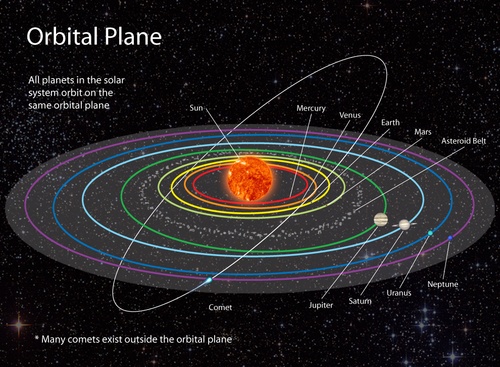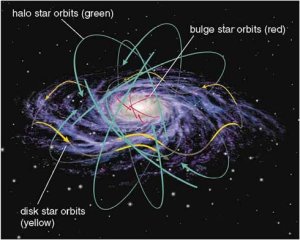
When we look out into the universe, we find objects tend to orient themselves in nice, flat planes. For those who don’t know the physical processes behind this phenomena, this seems extremely strange considering the three-dimensional nature of space (special dimensions that is).

Before I start, you should be aware that solar systems and galaxies aren’t completely flat. Yes, the bulk of objects in galaxies and solar systems orbit on the same general plane as one another, but then you’ll have objects like Pluto. Pluto has an orbital inclination of about 17 degrees relative to the plane of the solar system. On the galactic level, most galactic nuclei have a cloud of globular clusters in orbit around them. Most of the time, this cloud orbits more as a sphere rather than a disk.
OK, on to the actual question. Why do solar systems and galaxies favor relatively flat orbital planes? This mainly has to deal with angular momentum. “In physics, angular momentum (or rotational momentum) is a vector quantity that represents the product of a body’s rotational inertia and rotational velocity about a particular axis.”
From here, I’ll pull some small-scale examples of angular momentum. Take a gyroscope as an example. You remember those from your childhood. Wrap a string around it’s center access, pull the string as hard as you can to get the center spinning as fast as possible, then enjoy as it defies gravity. Force, torque, momentum, and angular momentum combine to provide this elegant balance. Swinging a bucket full of water around (in a circle) is another example of angular momentum at work. Another such example is watching a figure skater. In this case, when a skater turns, they can more noticeably alter the values for the forces at work by pulling in to a tight ball (where they will spin very fast) or stretching out long (causing them to spin more slowly).

In fact, the same process can be seen in just about any rotating system of particles. Take pizza dough as an example. You know when chefs take the round ball of dough, and throw it into the air adding a flick of the wrist to add some angular momentum, then it magically lengthens into a disk (or, the dough orients around the plane on the axis of rotation). Planets do exactly the same thing. The Earth bulges out in the center due to the same processes.
Solar systems and galaxies get their angular momentum from the condensing matter that makes up the system. Use a solar system as an example. As the cloud of interstellar gas condensed to make the solar system, off-center collisions of particles added a little torque. This twisting compounded as more and more off center collisions happened and the cloud elongated in the same way pizza dough does. In exactly the same way, galaxies too were formed from collapsing interstellar gas and other galaxy collisions.
Now, if you excuse me, I think I’m going to go order some pizza.